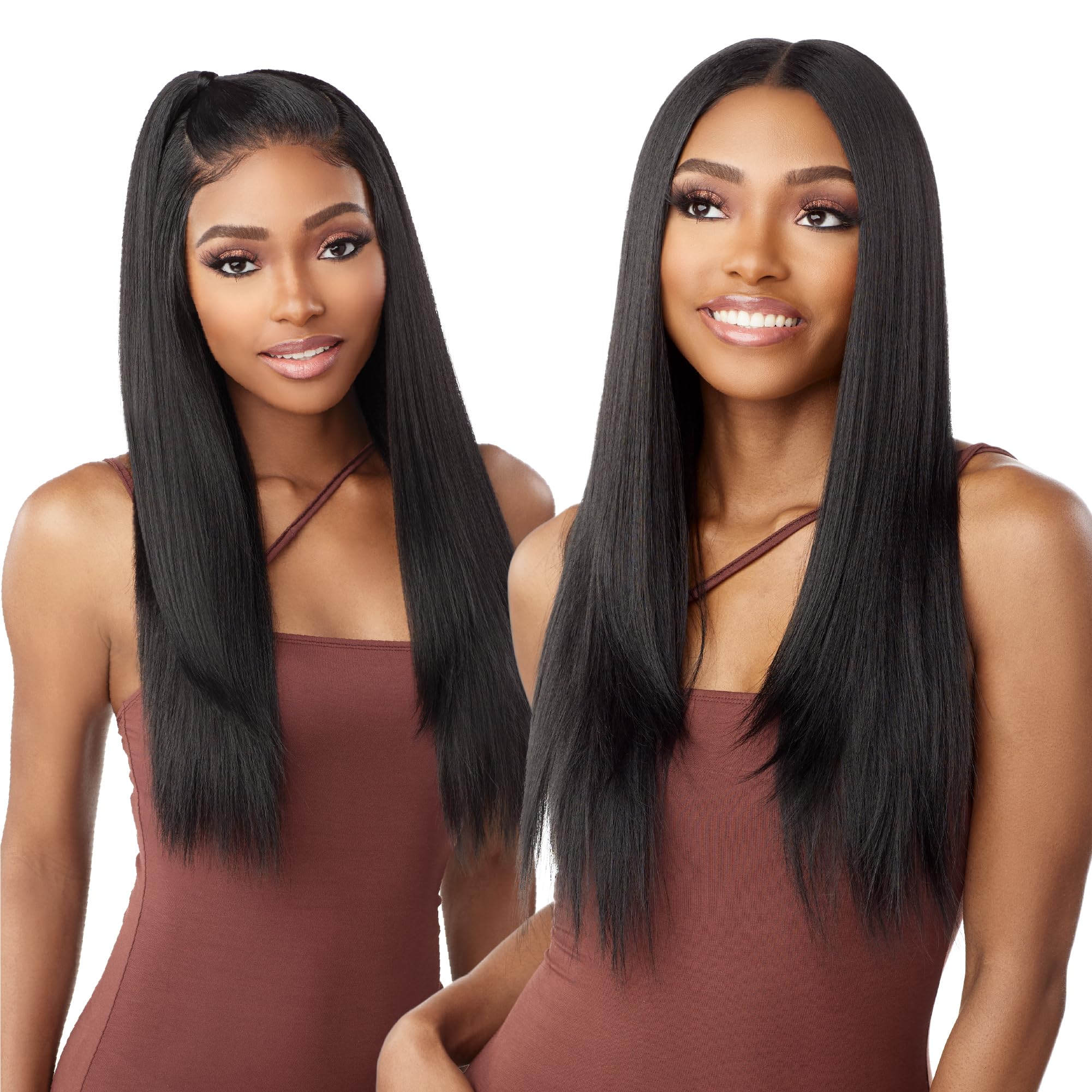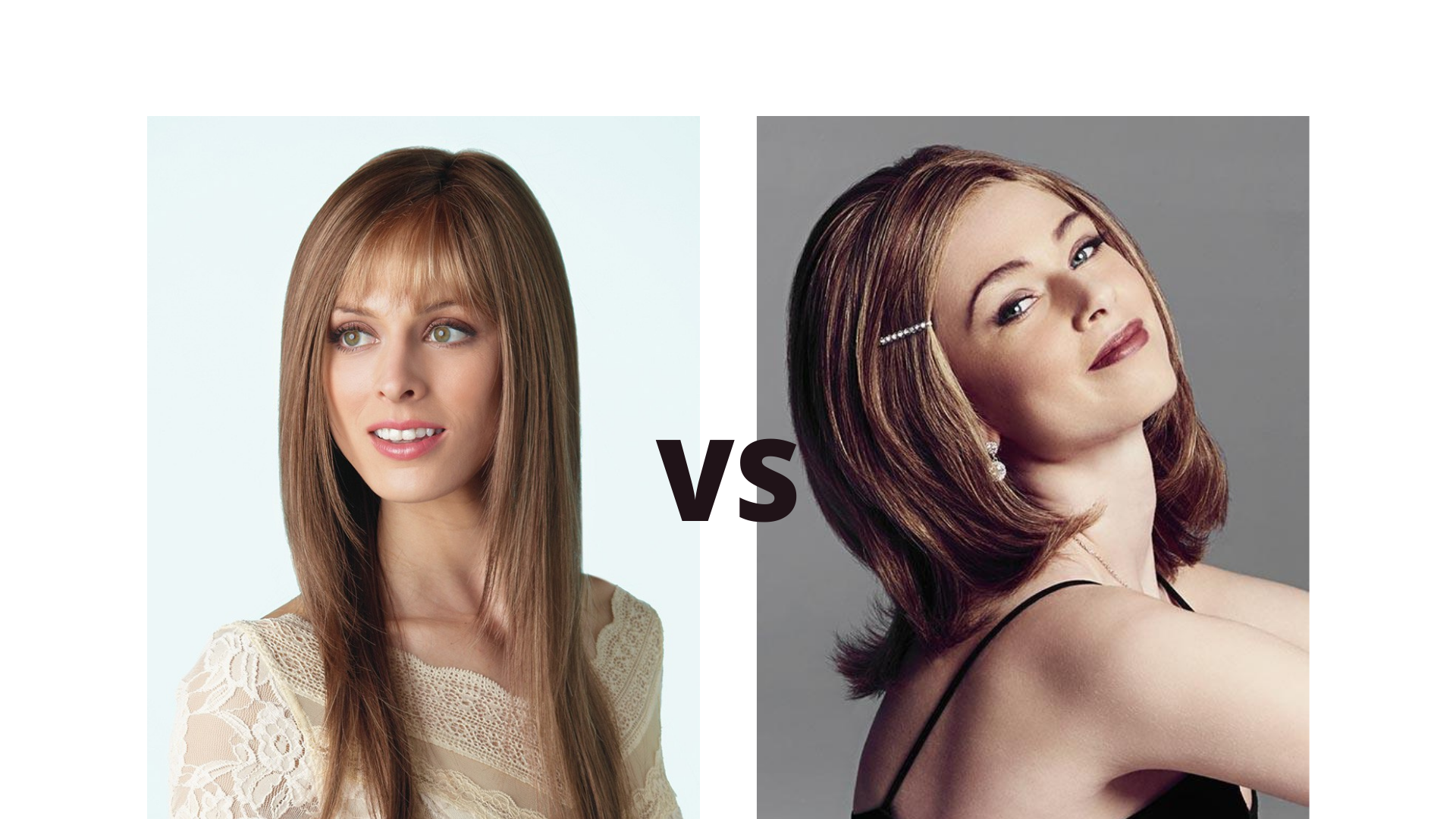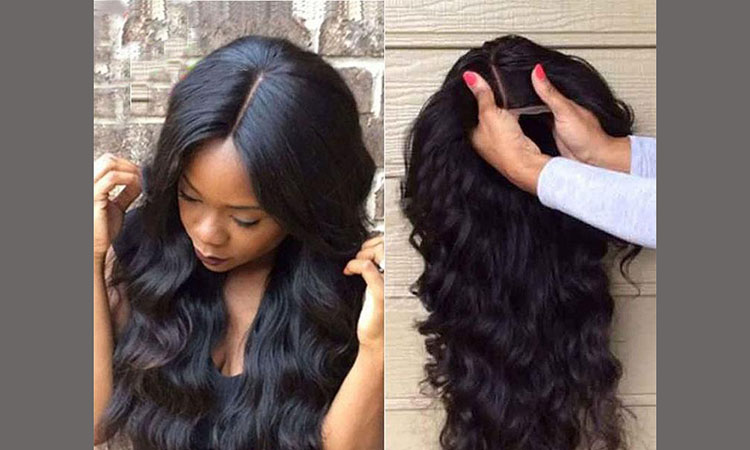Introduction
Wigs are a popular accessory for enhancing one’s appearance, whether for fashion, medical reasons, or simply as a convenient styling option. When choosing a wig, it’s important to consider the material from which it’s made. The two main types of wigs available on the market are synthetic wigs and human hair wigs. Understanding the differences between these two options can help you make an informed decision based on your needs and preferences.
Material Composition:
- Synthetic Wigs: Synthetic wigs are made from artificial fibers, typically a type of plastic called synthetic polymer. These fibers are designed to mimic the look and feel of natural hair to some extent.
- Human Hair Wigs: As the name suggests, human hair wigs are made from real human hair. This hair is collected from various sources, such as donors or hair salons, and undergoes processing to create high-quality wigs.
Appearance and Styling Options:
- Synthetic Wigs: Synthetic wigs come pre-styled and retain their shape even after washing. They are available in a wide variety of colors, styles, and textures. However, due to the nature of synthetic fibers, they may not have as much natural movement and shine as human hair wigs.
- Human Hair Wigs: Human hair wigs offer a more natural appearance since they are made from real hair. They can be styled and manipulated just like your own hair, providing versatility in terms of styling options. Human hair wigs also have a natural shine and movement that synthetic wigs may lack.
Durability and Lifespan:
- Synthetic Wigs: Synthetic wigs are generally more affordable than human hair wigs. However, they have a shorter lifespan and tend to wear out more quickly, especially with regular use and styling. Synthetic fibers are prone to frizzing, tangling, and heat damage, which can affect the overall quality and longevity of the wig.
- Human Hair Wigs: Human hair wigs are more durable and can last significantly longer than synthetic wigs when properly cared for. They can withstand heat styling tools and regular washing without losing their integrity. With proper maintenance, human hair wigs can last for years, making them a long-term investment.

Maintenance and Care:
- Synthetic Wigs: Synthetic wigs require less maintenance compared to human hair wigs. They are pre-styled and retain their shape, so minimal styling is needed after washing. However, special care must be taken to avoid heat exposure, as synthetic fibers can melt or become damaged.
- Human Hair Wigs: Human hair wigs require regular maintenance and care similar to natural hair. They can be washed, conditioned, and styled with heat tools. Additionally, they may need periodic trims, treatments, and restyling to maintain their desired look.
Comfort and Breathability:
- Synthetic Wigs: Synthetic wigs tend to be lighter in weight and have built-in cap constructions that provide breathability. However, the synthetic fibers may not be as breathable as natural human hair, which can make the scalp feel warm or itchy during extended wear.
- Human Hair Wigs: Human hair wigs offer a more comfortable and breathable option since they are made from natural hair. The scalp can breathe more easily, reducing discomfort during prolonged use.
Price Range:
- Synthetic Wigs: Synthetic wigs are generally more budget-friendly and offer a wide range of affordable options to choose from.
- Human Hair Wigs: Human hair wigs tend to be more expensive due to the cost of sourcing and processing real hair. The price can vary depending on factors such as length, quality, and origin of the hair.

Heat Resistance:
- Synthetic Wigs: Synthetic fibers are not heat-resistant, meaning you cannot use heat styling tools like curling irons or straighteners on them. Applying heat can cause melting or damage to the wig.
- Human Hair Wigs: Human hair wigs can withstand heat styling tools, allowing you to straighten, curl, or style them as desired. This provides more versatility in achieving different looks.
Color Retention:
- Synthetic Wigs: Synthetic wigs retain their original color well and are less likely to fade over time, even with regular washing and exposure to sunlight.
- Human Hair Wigs: Human hair wigs can experience some fading or color change over time, similar to natural hair. However, this can be minimized by using color-safe products and protecting the wig from excessive sun exposure.
Natural Feel:
- Synthetic Wigs: While synthetic wigs have improved in terms of mimicking the look and feel of natural hair, they may still feel slightly different to the touch compared to human hair. Some people may find synthetic fibers to be less soft or smooth.
- Human Hair Wigs: Human hair wigs have a more natural feel and texture since they are made from real hair. They offer a tactile experience similar to your own hair, making them more comfortable to wear.
Versatility in Styling:
- Synthetic Wigs: Synthetic wigs come pre-styled and generally maintain their shape, which can limit your ability to change the hairstyle. Restyling options may be limited, and excessive manipulation can cause damage.
- Human Hair Wigs: Human hair wigs offer greater versatility in styling. You can cut, dye, and style them just like natural hair. This allows you to change hairstyles or adapt the wig to suit your preferences.
Allergies and Sensitivities:
- Synthetic Wigs: Synthetic fibers are less likely to cause allergic reactions or sensitivities in most individuals, as they are made from hypoallergenic materials.
- Human Hair Wigs: Some people may be sensitive or allergic to certain chemicals or treatments used in processing human hair wigs. It’s important to consider any known allergies or sensitivities when choosing a wig material.
Availability and Customization:
- Synthetic Wigs: Synthetic wigs are widely available and come in a variety of styles and colors, making it easier to find a wig that suits your preferences without customization.
- Human Hair Wigs: While human hair wigs offer customization options, such as custom color or cut, they may require more time and effort to obtain. Human hair wigs can also be more limited in terms of specific styles or colors available.

Conclusion
It’s essential to weigh these factors against your own needs, preferences, and budget when deciding between synthetic wigs and human hair wigs. Consider factors such as desired style, versatility, durability, maintenance requirements, and overall appearance to choose the wig that best suits your individual circumstances and goals.
